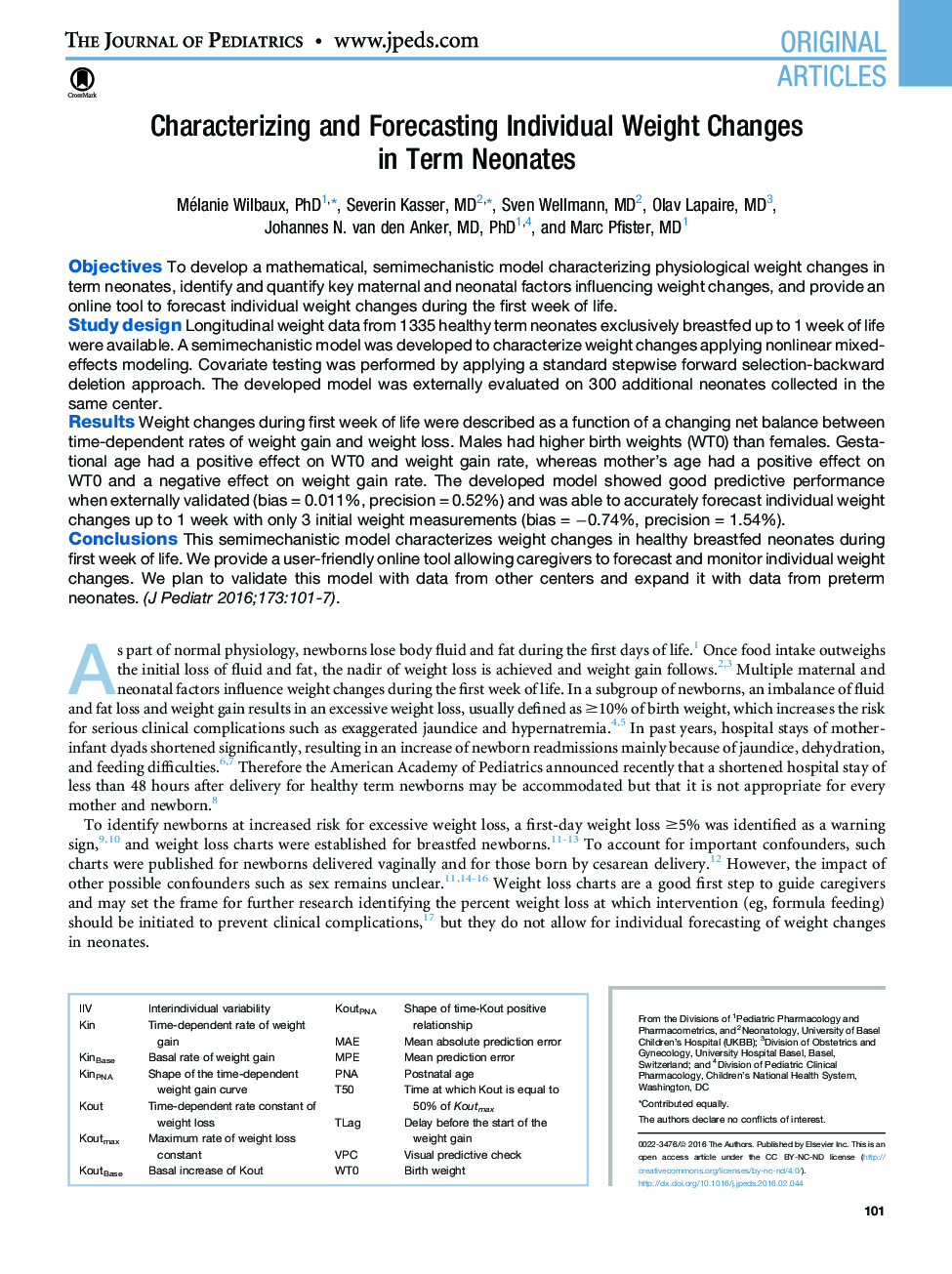| Article ID | Journal | Published Year | Pages | File Type |
|---|---|---|---|---|
| 6219502 | The Journal of Pediatrics | 2016 | 17 Pages |
ObjectivesTo develop a mathematical, semimechanistic model characterizing physiological weight changes in term neonates, identify and quantify key maternal and neonatal factors influencing weight changes, and provide an online tool to forecast individual weight changes during the first week of life.Study designLongitudinal weight data from 1335 healthy term neonates exclusively breastfed up to 1 week of life were available. A semimechanistic model was developed to characterize weight changes applying nonlinear mixed-effects modeling. Covariate testing was performed by applying a standard stepwise forward selection-backward deletion approach. The developed model was externally evaluated on 300 additional neonates collected in the same center.ResultsWeight changes during first week of life were described as a function of a changing net balance between time-dependent rates of weight gain and weight loss. Males had higher birth weights (WT0) than females. Gestational age had a positive effect on WT0 and weight gain rate, whereas mother's age had a positive effect on WT0 and a negative effect on weight gain rate. The developed model showed good predictive performance when externally validated (bias = 0.011%, precision = 0.52%) and was able to accurately forecast individual weight changes up to 1 week with only 3 initial weight measurements (bias = â0.74%, precision = 1.54%).ConclusionsThis semimechanistic model characterizes weight changes in healthy breastfed neonates during first week of life. We provide a user-friendly online tool allowing caregivers to forecast and monitor individual weight changes. We plan to validate this model with data from other centers and expand it with data from preterm neonates.
